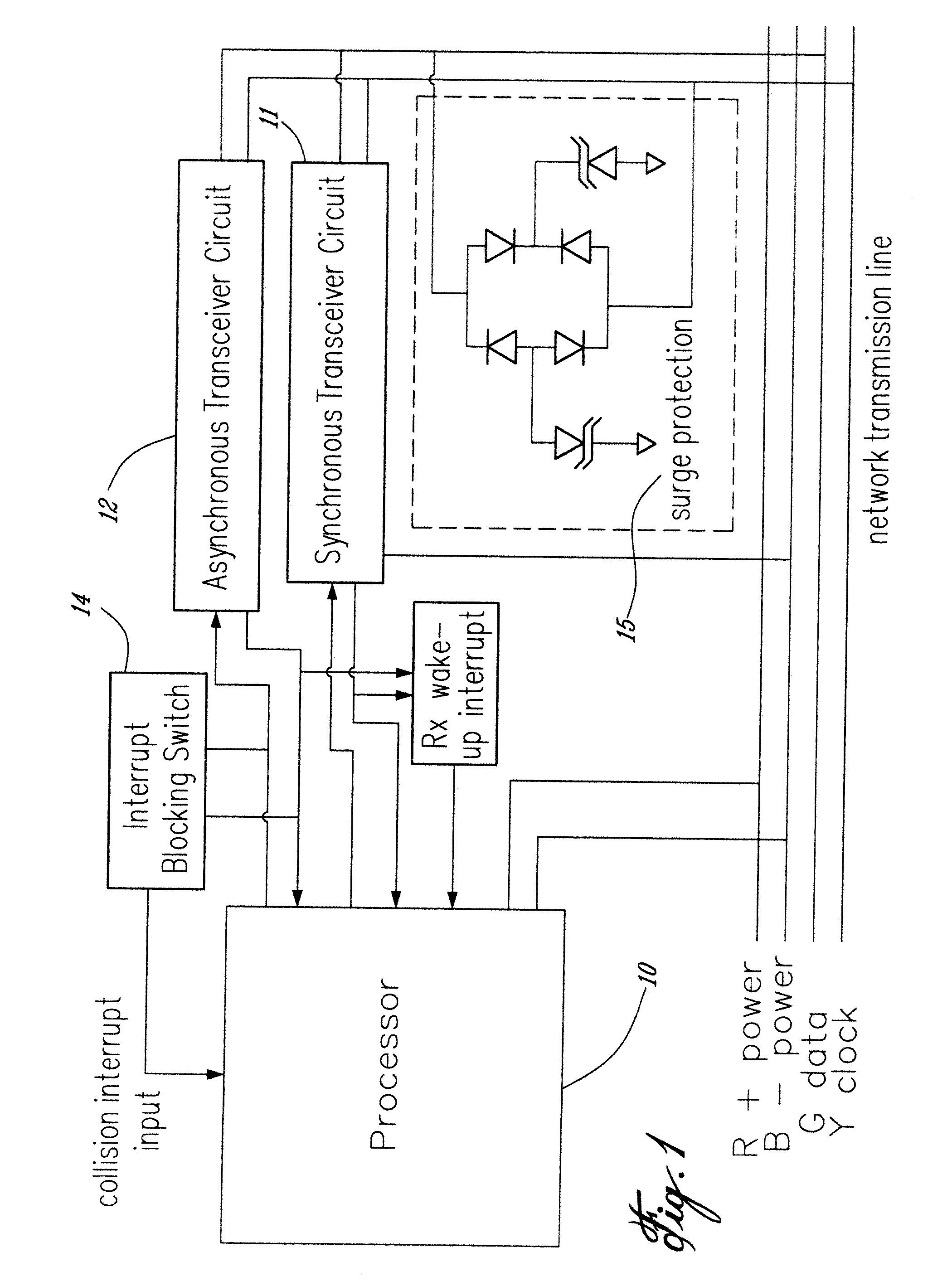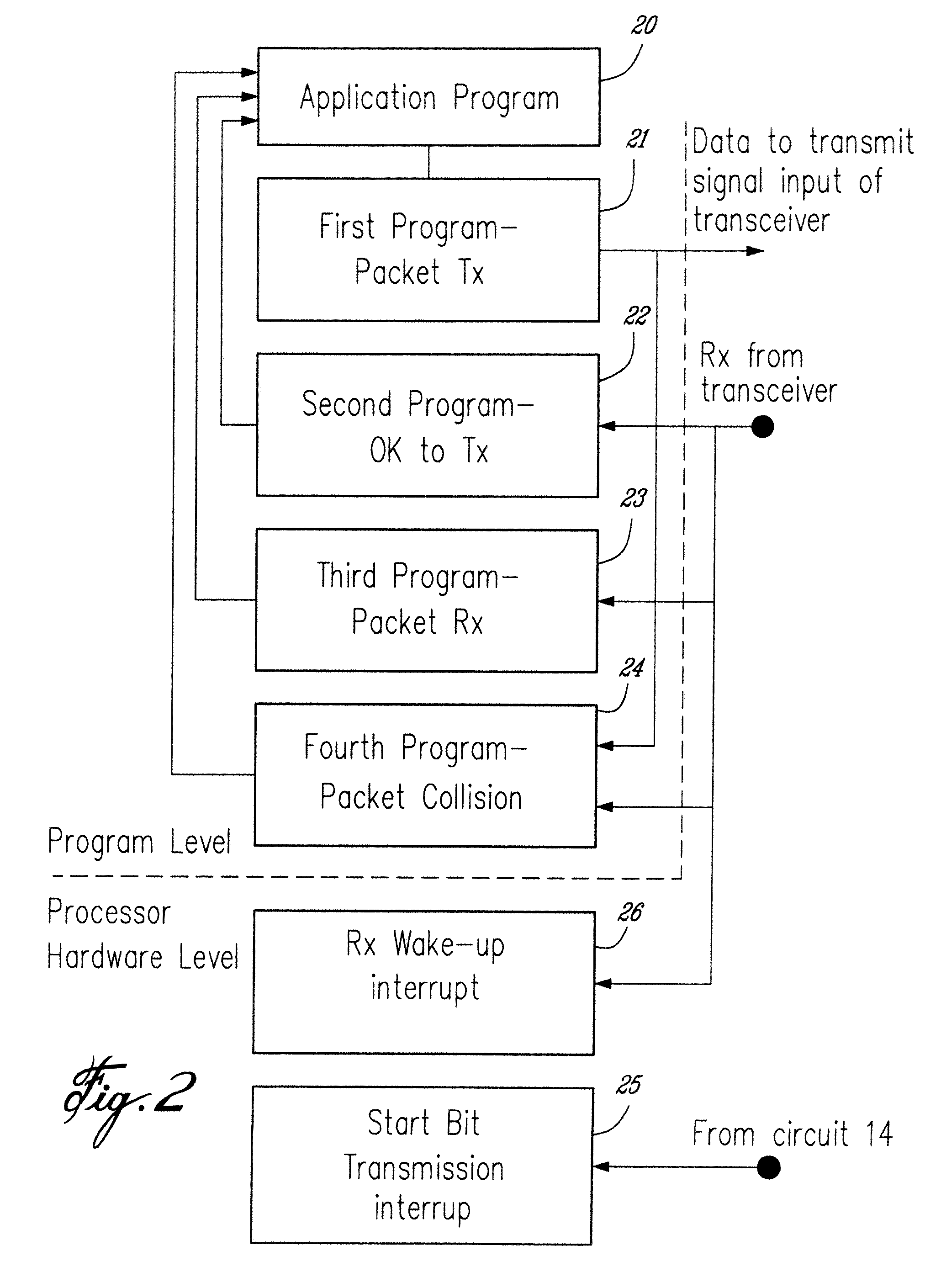Device network
a device network and data network technology, applied in the field of local data networks, can solve the problems of high cost of ethernet cabling, high cost of wiring, and difficulty in selecting and positioning end-of-line terminations in a mesh topology, so as to improve the nominal effective data transmission throughput and avoid collisions better
- Summary
- Abstract
- Description
- Claims
- Application Information
AI Technical Summary
Benefits of technology
Problems solved by technology
Method used
Image
Examples
Embodiment Construction
[0036] In the embodiment of FIG. 1, a network device is illustrated in which both synchronous and asynchronous communications are possible on the same network. The network transmission line is of the type that has four wires, two for power (namely the red and black) and two for transmission (namely green and yellow).
[0037] The synchronous transmission circuit 11 encodes / decodes a master-slave transmission protocol in which a single bit of data is transmitted on the data line timed by the clock signal. The master device sends the clock signal, and in one embodiment, the master sends one bit during each clock low. When a slave device is directed to transmit by the master, it sends its bits during each clock high until its data has been sent. In this way, data transmission is split between sending from the master and sending from the selected slave device.
[0038] The synchronous transmission protocol can work efficiently with a mesh network topology as shown in FIG. 3 without end-of-l...
PUM
 Login to View More
Login to View More Abstract
Description
Claims
Application Information
 Login to View More
Login to View More - R&D
- Intellectual Property
- Life Sciences
- Materials
- Tech Scout
- Unparalleled Data Quality
- Higher Quality Content
- 60% Fewer Hallucinations
Browse by: Latest US Patents, China's latest patents, Technical Efficacy Thesaurus, Application Domain, Technology Topic, Popular Technical Reports.
© 2025 PatSnap. All rights reserved.Legal|Privacy policy|Modern Slavery Act Transparency Statement|Sitemap|About US| Contact US: help@patsnap.com



